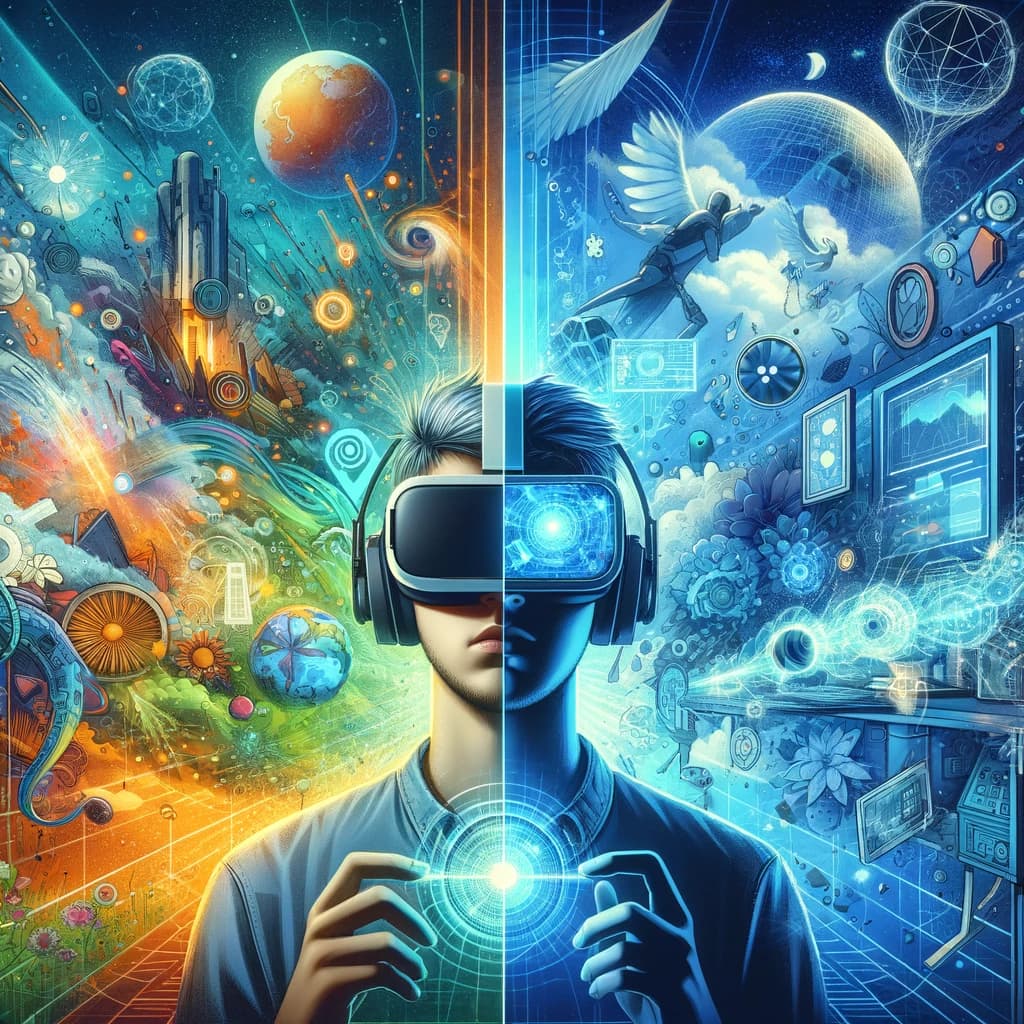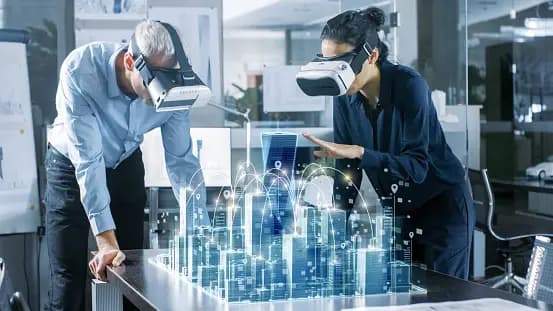
Virtual Reality vs. Augmented Reality: Blurring the Lines Between Reality and the Digital World
Introduction
In the realm of technology, Virtual Reality (VR) and Augmented Reality (AR) have emerged as transformative forces, blurring the lines between reality and the digital world. While both offer immersive experiences, they do so in distinct ways, each with its own set of applications and advantages. Let's delve deeper into the definitions, differences, and applications of VR and AR, as well as their impact on various industries.
Virtual Reality Definition
Virtual Reality (VR) transports users into a completely simulated environment, often achieved through the use of headsets or goggles. In VR, users are fully immersed in a digital world, where they can interact with objects and environments as if they were physically present.

Augmented Reality Explained
Augmented Reality (AR), on the other hand, overlays digital content onto the real world, enhancing the user's perception of reality. AR technology typically utilizes smartphones, tablets, or AR glasses to superimpose digital elements onto the physical environment.

VR vs. AR Comparison:
Understanding the Differences
While both VR and AR offer immersive experiences, they differ in their approach and applications. VR creates a fully immersive digital environment, while AR enhances the real world with digital overlays. VR typically requires dedicated headsets, whereas AR can be experienced through devices like smartphones or AR glasses.
Virtual Reality Technology
Virtual Reality technology encompasses hardware such as VR headsets, motion controllers, and sensors, as well as software for creating and experiencing virtual environments. Advancements in VR technology have led to more realistic graphics, improved motion tracking, and enhanced user experiences.

Augmented Reality Applications
Augmented Reality finds applications across various industries, including gaming, education, healthcare, marketing, and manufacturing. From interactive educational simulations to immersive retail experiences, AR is reshaping how we interact with the world around us.
VR Experiences
Virtual Reality offers immersive experiences ranging from gaming and entertainment to training and therapy. Users can explore virtual worlds, interact with objects, and engage in activities that would otherwise be impossible in the real world.

AR Devices
Augmented Reality devices include smartphones, tablets, and AR glasses, such as the popular Google Glass and Microsoft HoloLens. These devices enable users to experience AR applications and content seamlessly integrated into their surroundings.
Virtual Reality Devices
Virtual Reality devices encompass a wide range of headsets, from standalone VR headsets to high-end PC-powered devices. Brands like Oculus, HTC, and Sony offer VR headsets that cater to different levels of immersion and affordability.

Augmented Reality Headsets
Augmented Reality headsets overlay digital content onto the user's field of view, blending virtual elements with the real world. AR glasses like Google Glass and Microsoft HoloLens provide hands-free AR experiences, opening up possibilities for navigation, communication, and visualization.
Virtual Reality Gaming
Virtual Reality gaming immerses players in realistic virtual environments, allowing them to interact with characters and objects in three-dimensional space. From action-packed adventures to immersive simulations, VR gaming offers an unparalleled level of immersion and interactivity.
Augmented Reality Gaming
Augmented Reality gaming integrates virtual elements into the real world, turning everyday surroundings into interactive gaming environments. AR games like Pokémon GO and Ingress have captivated millions of players worldwide, blending gaming with real-world exploration.
VR in Education
Virtual Reality is revolutionizing education by providing immersive learning experiences that engage students and enhance comprehension. VR simulations allow students to explore historical landmarks, dissect virtual organisms, and conduct scientific experiments in a safe and controlled environment.
AR in Healthcare
Augmented Reality is transforming healthcare by enabling surgeons to visualize patient data, overlaying medical images onto the surgical field for enhanced precision. AR applications also assist in medical training, patient education, and remote consultations, improving healthcare delivery and outcomes.
Virtual Reality Trends
Virtual Reality trends include the rise of standalone VR headsets, the growth of VR arcades and theme parks, and the increasing adoption of VR for enterprise training and collaboration. As VR technology becomes more accessible and affordable, we can expect to see continued innovation and expansion in this space.
Augmented Reality Trends
Augmented Reality trends encompass the integration of AR into everyday products and services, from AR-enabled shopping experiences to AR-enhanced navigation and advertising. As AR technology matures and...
Conclusion
In conclusion, the convergence of Virtual Reality and Augmented Reality is reshaping how we perceive and interact with the world around us. While VR immerses users in entirely digital environments, AR enhances the real world with virtual overlays, blurring the lines between reality and the digital realm. Both technologies offer unique opportunities for entertainment, education, healthcare, and various industries, driving innovation and transforming user experiences. As VR and AR continue to evolve and become more accessible, we can expect to see even greater integration into our daily lives, unlocking new possibilities and redefining the boundaries between the physical and digital worlds.
FAQs
What is the difference between Virtual Reality and Augmented Reality?
Virtual Reality (VR) creates fully immersive digital environments, while Augmented Reality (AR) overlays digital content onto the real world.
What are some examples of Virtual Reality applications?
Virtual Reality applications include gaming, education, training simulations, virtual tours, and therapy experiences.
How is Augmented Reality used in healthcare?
Augmented Reality is used in healthcare for surgical navigation, medical training, patient education, and remote consultations.